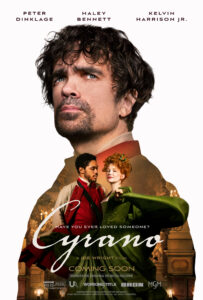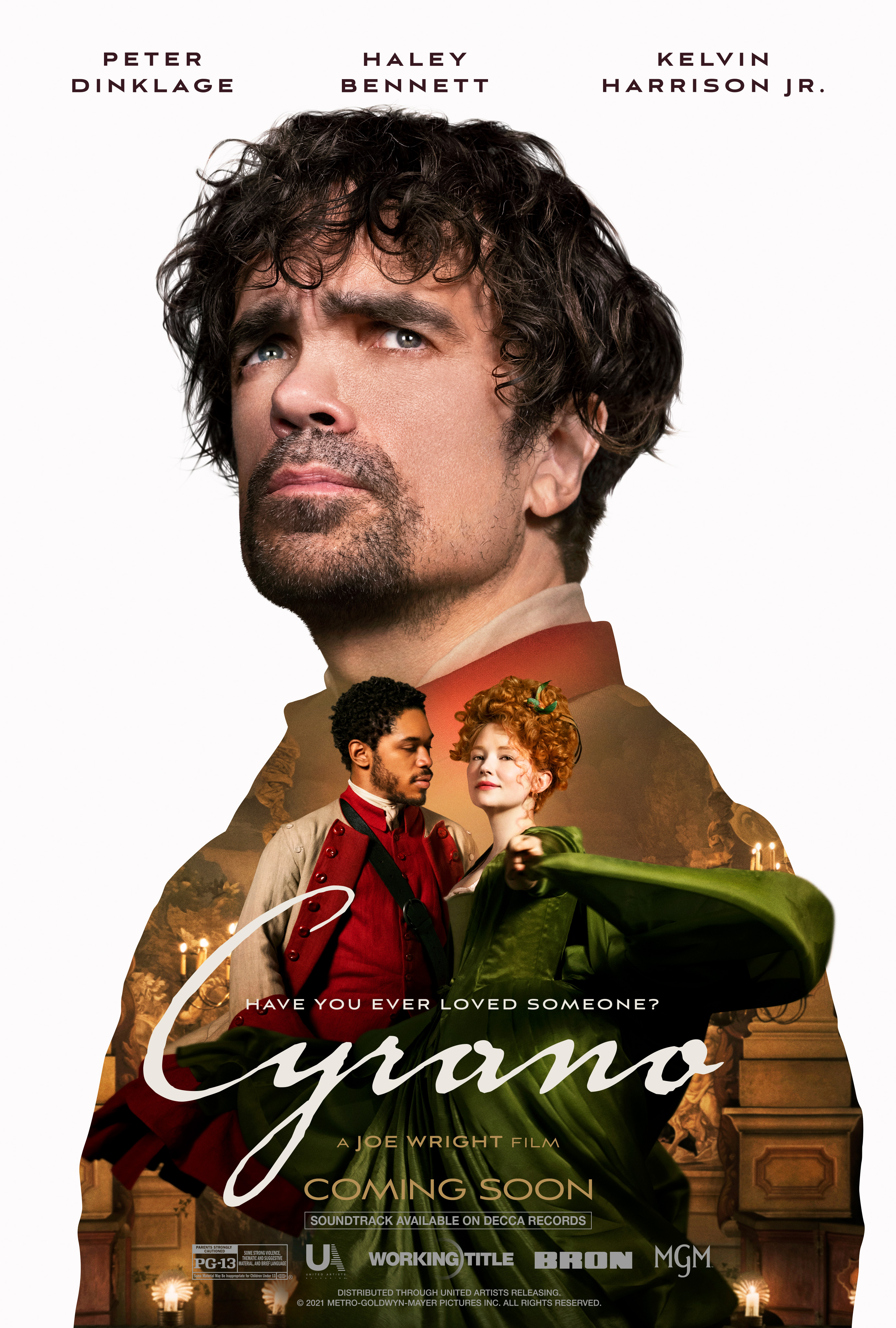Cyrano
Posted on January 31, 2022 at 6:48 pm
A-| Lowest Recommended Age: | Middle School |
| MPAA Rating: | Rated PG for some strong violence, thematic and suggestive material, and brief language |
| Profanity: | Brief strong language |
| Alcohol/ Drugs: | Alcohol |
| Violence/ Scariness: | Sword fights and battles, characters injured and killed |
| Diversity Issues: | A theme of the movie, but transphobic humor |
| Date Released to Theaters: | February 4, 2022 |
| Date Released to DVD: | April 18, 2022 |

In the original and “Roxanne,” the impediment is a nose so big that the Cyrano character believes no one can see him as a romantic partner. In this swooningly romantic new version, set, like the original, in the 17th century, the physical obstacle is size. Writer Erica Schmidt adapted the play as a musical to be performed on stage by her husband, actor Peter Dinklage (“Game of Thrones”) as Cyrano, and ravishingly lovely Haley Bennett as Roxanne. They play those parts in this film, directed by Bennett’s significant other, Joe Wright (“Atonement,” “Pride and Prejudice”)
Roxanne is loved by three men: Cyrano, the handsome but better-with-a-sword-than-with-poetic-love-letters Christian (Kelvin Harrison, Jr. of “Waves”), and the selfish, predatory De Guiche (Ben Mendelsohn). Cyrano has been her closest friend and confidant since childhood. De Guiche is pressuring her to marry him. Her maid reminds her that she has no money and no other options for supporting herself. But one night at the theater, she glimpses Christian, a newcomer to the military unit where Cyrano serves, and she loses her heart to him. Cyrano agrees to ghost-write love letters from Christian to Roxanne. He pretends it is to help the new recruit but in reality it is to have his one chance to tell the woman he loves how he feels, even if the letters are signed by someone else.
In a way, Schmidt is giving her words to the man he she loves so that we can see him the way she does, gallant, mordantly witty, a brilliant actor, and a person of deep and generous humanity. A scene where he is almost about to dare to hope that Roxanne will say she loves him, the emotions that flicker across his face as he is almost successful maintaining his composure is one of the most touching moments on screen this year.
With Schmidt and Wright creating the words and images for the people they love, in spectacularly beautiful costumes (Massimo Cantini Parrini and Jacqueline Durran) and settings (Sicily filling in as 17th century France) with music and even some dance numbers, the unabashed romanticism almost bursts out of the screen. Bennett makes a lovely Roxanne, clever and spirited but allowing her own romanticism to blind her to the love that is already hers. Mendelsohnn seems to specialize in bad guys these days, and this is another strong performance, De Guiche’s brutality glimpsed under a very thin veneer of suavity. Harrison makes a gallant Christian. But it is Dinklage who is in every way the heart of the story. Just as we get to see Cyrano finally use his own words under cover of darkness to play the part of the man whose outside matches his inside, in this film we get to see Dinklage take center stage, with a performance of heart-stopping vulnerability. Rostand would be proud, and so would the man who inspired the play that continues to capture us more than a hundred years later.
Parents should know that this film includes brief strong language, sexual references, sword fights, and battle scenes, with characters injured and killed.
Family discussion: Should Cyrano have told Roxanne how he felt? If so, when? Is there a time when you misjudged someone based on looks or when you were misjudged?
If you like this, try: “Roxanne” and the Ferrar and PBS versions of “Cyrano de Bergerac”




